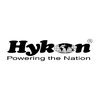i
AvenueCorp
Filter interviews by
AvenueCorp Interview Questions and Answers
13 Interview questions
A near miss is an incident that could have resulted in injury, damage, or loss but did not.
A near miss is a close call where no one was harmed but could have been.
It is important to report near misses to prevent future accidents.
Examples of near misses include a tool falling from height narrowly missing a worker, or a vehicle almost colliding with another but stopping just in time.
An unsafe act is a behavior or action that deviates from established safety procedures and puts oneself or others at risk of injury or harm.
Ignoring safety protocols
Using equipment improperly
Not wearing personal protective equipment
Taking shortcuts in tasks
Engaging in horseplay in the workplace
A hot work permit is a document that authorizes personnel to perform hot work activities in a specific area, ensuring safety measures are in place.
Hot work permits are typically required for activities such as welding, cutting, brazing, and grinding.
The permit outlines the precautions to be taken, fire prevention measures, and any special considerations for the work.
It is important for all personnel involved in ho...
TBT stands for Toolbox Talk, which is a short safety meeting held with employees to discuss specific safety topics.
TBT is a brief safety meeting where a specific safety topic is discussed with the team
It is usually held before starting a task to remind employees of potential hazards and safe work practices
Encourage team members to actively participate and ask questions during the TBT
Use visual aids or real-life ex...
An incident is an unexpected event that can cause harm, damage, or disruption to normal operations.
An incident can range from a minor accident to a major disaster.
It can include injuries, property damage, environmental impact, or business interruptions.
Examples of incidents include workplace accidents, natural disasters, chemical spills, and cyber attacks.
Unsafe conditions refer to any situation or environment that poses a risk to the health and safety of individuals.
Unsafe conditions can include hazards such as slippery floors, exposed electrical wires, faulty equipment, or inadequate lighting.
These conditions can lead to accidents, injuries, or even fatalities if not addressed promptly.
It is important for safety officers to identify and mitigate unsafe conditions...
Lifting work involves the manual handling of objects or materials to move them from one place to another.
Lifting work requires proper technique to prevent injuries.
Use of appropriate lifting equipment can help reduce strain on the body.
Examples of lifting work include moving boxes, furniture, or heavy machinery.
The fire triangle is a simple model for understanding the three elements necessary for a fire to start and continue burning.
The three elements of the fire triangle are fuel, heat, and oxygen.
If one of these elements is missing or removed, the fire will be extinguished.
For example, a fire cannot start or continue burning without all three elements present.
The ELV system operates at low voltage.
ELV stands for Extra Low Voltage.
The voltage range for ELV systems is typically between 50-1000 volts.
ELV systems are commonly used in telecommunications, security systems, and lighting control.
Examples of ELV systems include CCTV cameras, access control systems, and LED lighting.
The number of core used in network cables for camera communication varies depending on the type of camera and network setup.
Network cables for camera communication can have different numbers of cores, typically ranging from 2 to 8 cores.
The number of cores required depends on factors such as the camera resolution, power requirements, and additional functionalities like audio or PTZ control.
For basic camera communi...
AvenueCorp Interview Experiences
6 interviews found
(2 Questions)
- Q1. Field related technical question
- Q2. About handled system
Interview Preparation Tips
Growth-Oriented Culture: We prioritize the professional and personal growth of our team members, providing ample opportunities to learn, lead, and succeed.
I applied via Job Fair and was interviewed before Oct 2023. There were 3 interview rounds.
First Round: Initial Screening
This round is often conducted over the phone or via video call. Interviewers assess general qualifications, availability, and salary expectations. It's a chance for candidates to make a first impression and for employers to verify the details provided in the resume.
In the second round, interviews become more detailed and rigorous. This stage usually involves meeting different team members and may include technical tests, assessments, or task-based simulations. The aim is to gauge the candidate's skills, problem-solving abilities, and cultural fit within the company.
The third and usually final round of interviews is where top candidates meet with higher management or key decision-makers. This round might involve more in-depth discussions about the role, expectations, and how the candidate's goals align with the company's vision. It's an opportunity for deeper mutual evaluation and often ends with negotiation discussions about salary and benefits.
Interview Preparation Tips
(3 Questions)
- Q1. What do you know about the ELV system?
- Ans.
ELV system stands for Extra Low Voltage system, which includes electrical systems operating at low voltage levels.
ELV system refers to electrical systems operating at voltage levels below 50 volts AC or 120 volts DC.
It includes various subsystems such as fire alarm systems, security systems, access control systems, CCTV systems, etc.
ELV systems are commonly used in buildings, industries, and infrastructure projects.
The...
- Q2. Which system comes in ELV System?
- Ans.
ELV System stands for Extra Low Voltage System.
ELV System includes various systems that operate on low voltage such as fire alarm systems, security systems, access control systems, CCTV systems, etc.
It is used to provide power and control to different electrical and electronic equipment in a building or facility.
ELV System is essential for safety, security, and automation purposes.
Examples of ELV systems include interc...
- Q3. How many core use of Network Cable for Camera Communication?
- Ans.
The number of core used in network cables for camera communication varies depending on the type of camera and network setup.
Network cables for camera communication can have different numbers of cores, typically ranging from 2 to 8 cores.
The number of cores required depends on factors such as the camera resolution, power requirements, and additional functionalities like audio or PTZ control.
For basic camera communicatio...
Interview Preparation Tips
Skills evaluated in this interview
I applied via Approached by Company and was interviewed before Mar 2023. There was 1 interview round.
(9 Questions)
- Q1. What is hira and what is swms?
- Ans.
HIRA stands for Hazard Identification and Risk Assessment, while SWMS stands for Safe Work Method Statement.
HIRA involves identifying potential hazards in the workplace and assessing the risks associated with them
SWMS is a document that outlines the high-risk construction work activities and the hazards and risks associated with them
Both HIRA and SWMS are important tools in ensuring workplace safety and compliance with...
- Q2. What is tbt and how to explain with your team?
- Ans.
TBT stands for Toolbox Talk, which is a short safety meeting held with employees to discuss specific safety topics.
TBT is a brief safety meeting where a specific safety topic is discussed with the team
It is usually held before starting a task to remind employees of potential hazards and safe work practices
Encourage team members to actively participate and ask questions during the TBT
Use visual aids or real-life example...
- Q3. What is hot work permit?
- Ans.
A hot work permit is a document that authorizes personnel to perform hot work activities in a specific area, ensuring safety measures are in place.
Hot work permits are typically required for activities such as welding, cutting, brazing, and grinding.
The permit outlines the precautions to be taken, fire prevention measures, and any special considerations for the work.
It is important for all personnel involved in hot wor...
- Q4. What is lifting work?
- Ans.
Lifting work involves the manual handling of objects or materials to move them from one place to another.
Lifting work requires proper technique to prevent injuries.
Use of appropriate lifting equipment can help reduce strain on the body.
Examples of lifting work include moving boxes, furniture, or heavy machinery.
- Q5. What is fire triangle?
- Ans.
The fire triangle is a simple model for understanding the three elements necessary for a fire to start and continue burning.
The three elements of the fire triangle are fuel, heat, and oxygen.
If one of these elements is missing or removed, the fire will be extinguished.
For example, a fire cannot start or continue burning without all three elements present.
- Q6. What is incident?
- Ans.
An incident is an unexpected event that can cause harm, damage, or disruption to normal operations.
An incident can range from a minor accident to a major disaster.
It can include injuries, property damage, environmental impact, or business interruptions.
Examples of incidents include workplace accidents, natural disasters, chemical spills, and cyber attacks.
- Q7. What is near Miss?
- Ans.
A near miss is an incident that could have resulted in injury, damage, or loss but did not.
A near miss is a close call where no one was harmed but could have been.
It is important to report near misses to prevent future accidents.
Examples of near misses include a tool falling from height narrowly missing a worker, or a vehicle almost colliding with another but stopping just in time.
- Q8. What is unsafe act?
- Ans.
An unsafe act is a behavior or action that deviates from established safety procedures and puts oneself or others at risk of injury or harm.
Ignoring safety protocols
Using equipment improperly
Not wearing personal protective equipment
Taking shortcuts in tasks
Engaging in horseplay in the workplace
- Q9. What is unsafe conditions?
- Ans.
Unsafe conditions refer to any situation or environment that poses a risk to the health and safety of individuals.
Unsafe conditions can include hazards such as slippery floors, exposed electrical wires, faulty equipment, or inadequate lighting.
These conditions can lead to accidents, injuries, or even fatalities if not addressed promptly.
It is important for safety officers to identify and mitigate unsafe conditions to e...
Interview Preparation Tips
Skills evaluated in this interview
I appeared for an interview before Oct 2021.

(2 Questions)
- Q1. What do you know about the ELV system
- Ans.
The ELV system stands for Extra Low Voltage system, which is a low voltage electrical system used for various applications.
ELV system operates at voltage levels below 50 volts AC or 120 volts DC.
It is commonly used for lighting, security systems, fire alarm systems, and communication systems.
ELV systems are safer to handle and pose less risk of electric shock.
Examples of ELV systems include CCTV cameras, access control...
- Q2. At what voltage does the ELV system operate?
- Ans.
The ELV system operates at low voltage.
ELV stands for Extra Low Voltage.
The voltage range for ELV systems is typically between 50-1000 volts.
ELV systems are commonly used in telecommunications, security systems, and lighting control.
Examples of ELV systems include CCTV cameras, access control systems, and LED lighting.
Interview Preparation Tips
- Complete your education first.
I applied via Naukri.com and was interviewed in Apr 2022. There were 2 interview rounds.

(3 Questions)
- Q1. Previous work Experience
- Q2. Knowledge about company
- Q3. Knowledge about the product
Interview Preparation Tips
Top trending discussions






Interview questions from similar companies

I applied via AngelList and was interviewed in Dec 2023. There was 1 interview round.
Design a software system that allows travel agencies to maintain their travel packages itinerary and passangers
Interview Preparation Tips

Software Engineer Interview Questions & Answers
National Instrumentsposted on 12 Jul 2016
I applied via Campus Placement
Interview Questionnaire
3 Questions
- Q1. They asked me optimise the code I had written for the first question
- Q2. Given a binary tree, find out the maximum sum path from root to leaf. This problem, but they said tree has only positive integers. -----/ . To store the path I had used global array. They asked me alternat...
- Q3. Given a list of words. Given three operations find out the minimum steps to reach from source string to destination string. Basically, -----/ this is the problem with some modification. For this question I...
- Ans.
The question is about finding the minimum steps to reach from a source string to a destination string using three operations.
BFS and DFS are graph traversal techniques that can be used to solve this problem.
BFS is typically used when finding the shortest path or exploring all possible paths in a graph.
DFS is useful when searching for a specific path or exploring deeply into a graph.
In this case, BFS can be used to find...
Interview Preparation Tips
Experience: • 1 question was on time complexity of searching an unsorted array.
• 2 questions were on recursion, ie, number of recursive calls.
• 1 question on analysing given function on string.
• 1 question was on probability(Two hotels, say A and B. Probability of moving from A to B is 2/3, staying at A is 1/3. Probability of moving from B to A and staying at B is 1/2. If they make decisions each hour, and if they were at A at 7:00 pm, what is the probability that they will be at B at 10:00 pm).
• If a set has elements {1,2,3,4 .... n}. Then what is the sum of elements of it's power set. (Ex: S = {1,2}. Then power set is {{},{1},{2},{1,2}}. The sum is 6.
• If a set has elements {1,2,3,4,5,6,7,8,9,10}. Then how many subsets of 3 elements has no consecutive elements.
• 1 question was on designing a DFA for a string starting with a and ending with c and has at least b in it.
• 1 question had machine instructions. We had to find out minimum number of cycles needed to execute the given set of instructions. (a) If the instructions are executed in the given order. (b) If the instructions are executed in random order.
• 1 puzzle on bridges.
Tips: In this round they not only see the answer. They also verify how you approached(So, give correct explanation to your answers).
Duration: 90 minutes
Total Questions: 10
Round: Coding Round
Experience: Two questions were there. 3 hours duration.
1. Long question, I don't remember fully. I'll just give input/output examples. It was basically on string decoding. If jon2snow3 is there the decoded string will be jonjonsnowjonjonsnowjonjonsnow. Given a string and an integer k we have print the kth character in the decoded string
input:
jon2snow3
8
output:
n
2. Given an array and an integer k return the number of contiguous sub arrays whose sum is divisible by k.
input format:
n k
input:
4 5
10 0 4 5
output:
4
explaination: {10},{0},{10,0},{5} are the sub arrays with sum divisible by 5.
Tips: You will have lots of time, so try to optimise the solution if you can. Remember here also they review each individual's code.
Round: Technical Interview
Experience: They will help you a lot if you are stuck at some point in the question. You have to be smart enough to grasp the clue.
Tips: They only ask questions only on data structures and algorithms.
Skill Tips: You have to be strong in coding. Algorithm questions will be mostly on dynamic programming. Data structures questions are mostly on trees.
Skills: C Programming, Maths(esp Probability), Algorithms And Data Structures
Duration: 5
College Name: JSS Mahavidyapeetha Sri Jayachamarajendra College Of Engineering, Mysore
Skills evaluated in this interview

Software Engineer Interview Questions & Answers
National Instrumentsposted on 14 Jul 2017
Interview Questionnaire
3 Questions
- Q1. Asked me about my answer for a question in the logical test and asked me to find mistake
- Q2. Some tree question
- Q3. Some array question
Interview Preparation Tips
Experience: Just logical questions. Maybe create a DFA and NFA.
Duration: 1 hour
Total Questions: 20
Round: Coding
Experience: Given two questions. Each question is written like a story, but once you get the idea, it will be a simple question
College Name: Govt. Model Engineering College

Software Engineer Interview Questions & Answers
National Instrumentsposted on 13 Aug 2024
3 rounds online, dsa, hr
(2 Questions)
- Q1. Dsa on dp topic
- Q2. Dsa on dp topics
AvenueCorp Interview FAQs
Tell us how to improve this page.
AvenueCorp Interviews By Designations
- AvenueCorp Safety Officer Interview Questions
- AvenueCorp Senior Service Engineer Interview Questions
- AvenueCorp Castmer Sarviesh Interview Questions
- AvenueCorp Regional Service Manager Interview Questions
- AvenueCorp Service Supervisor Interview Questions
- AvenueCorp Assistant Manager- Purchase Interview Questions
Interview Questions for Popular Designations
Overall Interview Experience Rating
based on 5 interview experiences
Difficulty level
Duration
Interview Questions from Similar Companies
AvenueCorp Reviews and Ratings
based on 46 reviews
Rating in categories
|
Safety Officer
7
salaries
| ₹2.2 L/yr - ₹4 L/yr |
|
Project Engineer
6
salaries
| ₹2 L/yr - ₹4 L/yr |
|
Project Manager
5
salaries
| ₹4.1 L/yr - ₹6 L/yr |
|
Senior Project Engineer
5
salaries
| ₹3 L/yr - ₹3.5 L/yr |
|
Executive Accountant
4
salaries
| ₹2.9 L/yr - ₹4.1 L/yr |

Hykon

Chheda Electricals and Electronics

Vu Televisions

Systematic Group
- Home >
- Interviews >
- AvenueCorp Interview Questions











